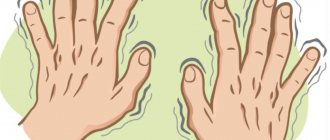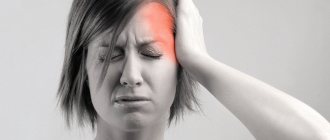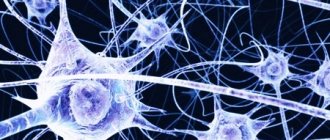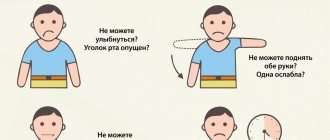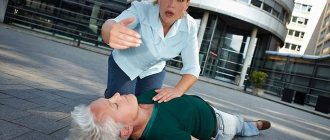Rehabilitation after stroke
Recovery or rehabilitation after a stroke is a set of measures aimed at returning the abilities and functions of the body lost due to impaired blood circulation in the brain. Rehabilitation after a hemorrhagic stroke, as after an ischemic one, requires the involvement of specialized specialists. This allows you to restore lost abilities with minimal functional impairment. To rehabilitate people who have suffered a stroke, a group of doctors specializing in this issue works at the New Hospital. Our rehabilitation center in Yekaterinburg helps patients get back on their feet and return to a full life.
Classes
After the stroke, my vision was severely damaged. The eyes looked in different directions. No way, I couldn’t see what was in front of me. The picture was triplicated and completely out of focus. After the stroke, the eye muscles stopped working. It was impossible to move my eyes in the desired direction. The left eye lived a separate life from the right. I recently watched the video. My son took me down. Specific Barmaley)).
In order to restore normal vision after a stroke, it was necessary to train the eyes. One of the doctors then told us that there is no need to sweat, the eyes make millions of movements during the day, everything will return to normal on its own, over time.
Comfortable! You don’t need to do a damn thing, everything will return to normal on its own. But we were “tormented by vague doubts.”
We started doing eye exercises in early February, when 6 weeks had passed since the stroke. At that time, as prescribed by doctors, I wore “one-eyed” glasses all the time. The right eye performed significantly better than the left. So we decided to give the main load to the badly damaged left eye. It really helped.
I wore “one-eyed” glasses for two months, during which time my left eye recovered significantly and became as functional as my right eye. Another big plus was that when I looked with one eye, the picture did not triple. The image was slightly out of focus, but at least something was visible.
Gradually I began to take off my “one-eyed” glasses and look without them. By the end of February, that is, ten weeks after the stroke, I began to be able to write a daily diary on the iPad. The image doubled and was out of focus, but I got into the letters more and more often))).
Symptoms
The term “stroke” in medical practice refers to a pathology in which there is a circulatory disorder in any part of the brain. After an attack, certain brain structures are damaged, causing the person to lose (partially or completely) certain skills. There are two types of this pathology:
- ischemic stroke - a circulatory disorder due to partial or complete blockage of a vessel;
- hemorrhagic stroke is a violation of the integrity of a vessel with subsequent hemorrhage in the brain.
Clinical manifestations of the pathology vary depending on which part of the brain was affected (left or right side, specific area), as well as the severity of the “impact” (the extent of damage to brain tissue). In most cases, rehabilitation after a hemorrhagic stroke is longer and more complex, since the nature of the lesions is more severe.
Medications
To normalize blood flow in the brain after a stroke and restore dead neurons, several groups of drugs are used.
Nootropics
The tablets help improve metabolism. During the treatment, the patient's oxygen delivery to nerve cells is normalized. The most effective drugs include:
- Nootropil 800 mg (270 r).
- Encephabol 100 mg (700 RUR).
At these prices, medications can be purchased in pharmacies in St. Petersburg.
Antiplatelet agents
This is another group of drugs that affects the fluidity and viscosity of the blood. Medicines prevent the development of thrombosis and normalize blood microcirculation in damaged tissues. To restore vision, doctors recommend using the following antiplatelet agents:
- Pentoxifylline 100 mg (80 r).
- Trental 100 mg (520 r).
Adenosinergic drugs
The therapeutic effect is to reduce blood viscosity and simulate the respiratory center.
Taking drugs from this group allows you to saturate the body with oxygen and increase the speed of blood flow. The following drugs help restore vision:
- Eufillin 150 mg (10 r).
- Pentoxifylline 100 mg (80 r).
Stroke treatment
The promptness and correctness of treatment carried out after an attack directly affects the success and timing of rehabilitation, as well as life after a stroke in general. It doesn’t matter whether the stroke occurred on the left or right side, the type of pathology plays a role in treatment:
- Ischemic - all actions are aimed at restoring blood circulation and eliminating the causes of vascular obstruction. To do this, medications that thin the blood, dissolve blood clots are used, or non-invasive methods are used to destroy blood clots.
- Hemorrhagic - first of all, it is necessary to stop the hemorrhage with medication. The resulting blood clot is then surgically removed, and aspiration may be used.
Prevention
Prevention comes down to the treatment and prevention of affecting diseases. Regular visits to a therapist, vision and fundus examinations should be carried out at least once a year.
Precautionary measures:
- avoid eye strain, wear safety glasses when working with a computer and telephone;
- avoid smoking, drinking alcohol;
- dose physical and emotional stress;
- maintain a sleep-wake schedule;
- do not take any medications without first consulting your doctor;
- know and treat chronic and hereditary pathologies;
- take courses of vitamin complexes to improve immunity, especially in the spring and autumn.
Taking precautions and knowing the basic symptoms and methods of recognizing an eye stroke will help you avoid such a terrible condition. If this happens, react in time and correctly and maintain your health.
Comprehensive program “Rehabilitation+”
This stroke rehabilitation program aims to return patients to as full a life as possible.
The main task of the specialists at the “New Hospital” is a separate approach to each patient. We use maximum opportunities to restore lost skills:
- restoration of vision;
- motor activity (recovery of arms and rehabilitation of legs after a stroke, fine motor skills);
- speech restoration;
- learning to tie shoelaces, wash dishes, etc.;
- restoration of driving skills.
As part of the program, our specialists try to restore not only the basic skills that were lost. We try to return the patient to a full life, focusing on the tasks that are necessary for a specific person.
How does one recover with gymnastics?
Rehabilitation is impossible without gymnastics and eye massage. During the exercise, areas of the brain that are damaged as a result of a stroke are activated.
Eye massage
When performing an eye massage, you need to smoothly move your fingers from the eyebrow arches to the temples. Repeat the exercise 5-10 times until heat appears in the treated area.
If painful sensations occur, you must stop the massage procedure.
Rolling eyes
The exercise is performed with maximum amplitude. The patient should move his gaze in different directions. Moreover, in each position you need to hold your eyes for 1-2 seconds.
Focus shift
Visual function can be restored by shifting the focus. Extend your arm forward and focus your gaze on your fingertips. After this, slowly bring your hand to your face. The exercise must be repeated 8-9 times.
Rehabilitation plan
In our stroke recovery center, an individual rehabilitation plan is developed for each patient.
It takes into account the degree of brain damage, the patient’s age, type of stroke, etc. The best specialists are working to create a plan, studying in detail the medical history, the patient’s life, and recording lost abilities. Thus, after an ischemic stroke of the brain, rehabilitation can be radically different for 2, 3, 5 or more patients. This is explained by the fact that the characteristics of the lesion are different in each case and must be taken into account when creating a plan.
Folk remedies
You can restore your vision after a stroke if you use the following recipes.
Mountain arnica tincture
To prepare the decoction you need:
- Take 1 teaspoon of plant flowers and pour 2 cups of boiling water.
- The product must be infused for 2 hours.
It is recommended to take 1 tbsp of the decoction. spoon before each meal. The tincture cannot be stored for more than 2 days. The benefits of using mountain arnica include the ability to relieve muscle spasms. The herb has a beneficial effect on the central nervous system.
Decoction of pine cones
The healing infusion allows you to eliminate cerebral circulation disorders. The solution contains tannins that have a hemostatic effect.
To prepare the decoction, you need to boil 5-6 fresh pine cones. The amount of water required to prepare the solution is 0.5 liters. The product should be taken 150 ml 3 times a day.
Motherwort tincture
The plant has a calming effect and helps get rid of neurological diseases.
Pour 15 g of dry herb with a glass of boiling water and leave for 30 minutes. The decoction should be taken 3 times a day, 2 tbsp. spoons. Restorative therapy with motherwort can eliminate psychological imbalance.
Eyebright compress
The plant is considered indispensable in the treatment of eye diseases.
To prepare the decoction, place 5 tbsp in a container. spoons of dry herbs and pour a liter of boiling water. It is recommended to apply a compress to the eyes daily.
The optimal duration of treatment is 14 days.
Restoration of motor functions
At the “New Hospital” in Yekaterinburg, rehabilitation specialists, neurologists and physical therapy doctors are involved in the restoration of motor functions. The tasks in this case are:
- stimulation of muscle activity;
- muscle strengthening;
- massage;
- stimulation of coordination between the brain and organs of the musculoskeletal system.
In this case, the main thing is to create a safe environment for the patient. To achieve the goal, special products for rehabilitation after a stroke are used (canes, walkers, exercise equipment, etc.).
Complications and consequences
Visual impairment can become irreversible after a stroke, even leading to blindness, if timely assistance is not provided to the patient. This is the main and most dangerous complication of the disease. An equally serious consequence is retinal detachment and macular defects, which also leads to vision loss. The transition of the pathological process to the second eye and optic nerve atrophy occur less frequently.
When the retina lacks nutrition, the body begins to come up with workarounds. This is how new blood vessels form – neovascularization. This is not a healing process - the new vessels are too brittle and tortuous, and the risk of rupture is high. There are known cases of neovascularization of the optic nerve head and neovascular glaucoma.
Temporary loss of vision
Temporary vision loss usually occurs suddenly in one eye, is painless and is described by patients as a sudden shadow. This condition may last for several minutes, then vision returns. Sometimes this condition repeats again and again. May occur in temporary vision loss in the second eye.
Typically, temporary vision loss occurs in elderly patients suffering from atherosclerosis and various vascular diseases. The cause may be small thrombi (blood clots) that break off from the arterial wall and enter the vessels of the eye, blocking the blood supply to the retina. When the blood clot is destroyed, it is destroyed and vision returns. Thrombosis or embolism usually occurs in the carotid or coronary (heart) arteries. An embolus may be cholesterol or calcium crystals.
This problem falls under the category of “ transient ischemic attacks ,” which can even result in a heart attack or stroke .
In this case, vascular studies are indicated and anticoagulants may be prescribed.
Acute vision loss also be caused by other problems, such as:
- Blockage of the vertebral arteries involved in the blood supply to the optic lobe of the brain.
- Increased intracranial pressure (the pressure of the fluid surrounding the brain). Increased intracranial pressure can cause immediate loss of vision, especially when the person changes position (for example, from a sitting position to a standing position).
- Spasm of the orbital artery, which supplies the retina with blood. It can also, although extremely rarely) cause temporary loss of vision in the eye.
Central retinal vein occlusion
Venous outflow from the vessels of the retina is carried out by one single vessel - the central retinal vein . If this vein becomes obstructed, various problems may occur, proportional to the degree of obstruction. In the case of such a pathology, the patient notices:
* vision impairment,
* blurred image,
* appearance of floaters
* loss of visual fields.
These changes occur unexpectedly and progress over a period of time (from several hours to several days). As a rule, these changes occur in one eye, rarely in both eyes.
The basis of this pathology is, as a rule, vascular changes, blood clots (as well as with blockage of the arteries).
The most effective treatment for this disease is treatment of concomitant diseases (diabetes, hypertension, atherosclerosis) in the hope that blood flow will be restored.
In about a third of all cases, vision is almost completely restored, in a third it remains at the same level, and in a third there is further deterioration and significant loss of vision.
In the most severe situations, it is necessary to resort to laser treatment to prevent dangerous forms of glaucoma . however, laser treatment will not restore vision.

